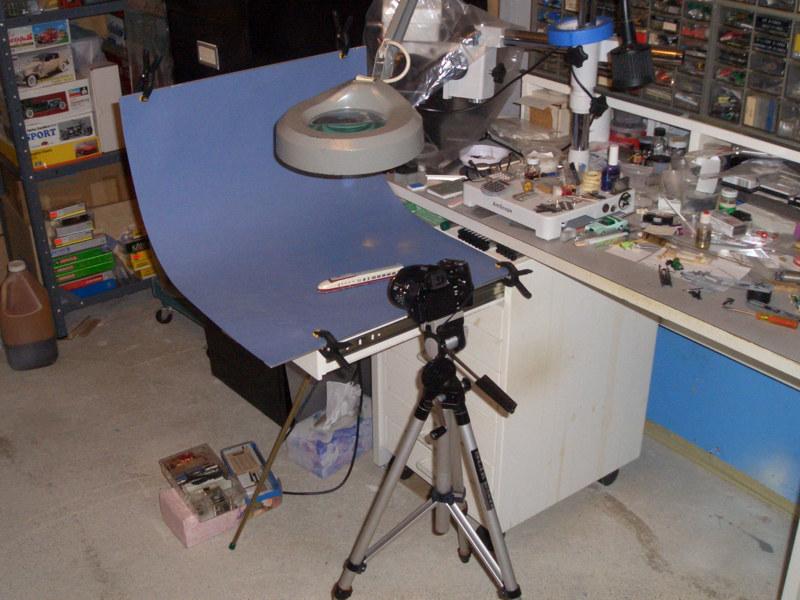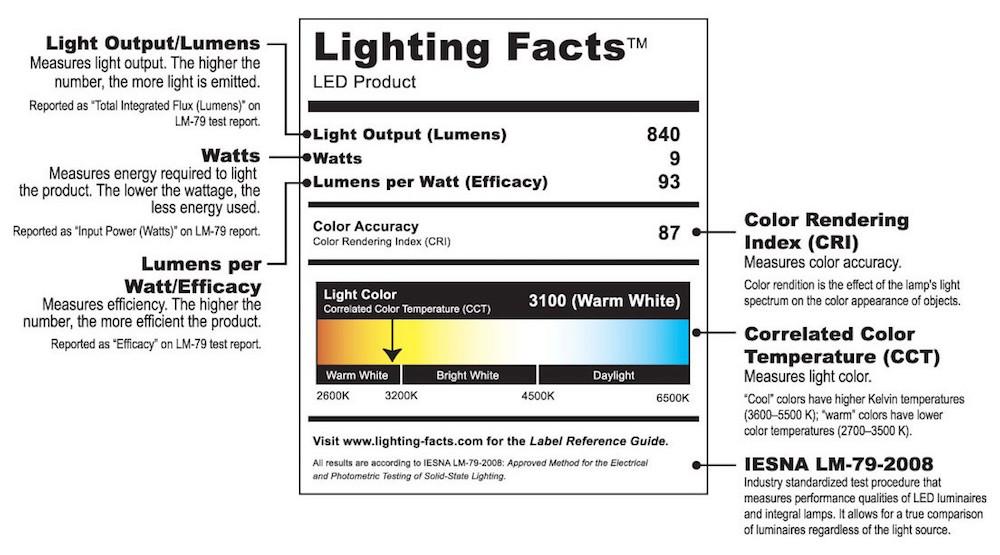-
Posts
9,217 -
Joined
-
Last visited
Content Type
Profiles
Forums
Events
Gallery
Everything posted by peteski
-
Basic color theory tells you that adding white to a color will make it lighter (appear faded). That has nothing to to do with the glossiness of a paint, although faded paint does often have dull (flat) finish.
-

Got 3D, now what? HELP!
peteski replied to customline's topic in Model Building Questions and Answers
Some resins are water-soluble, so I guess that's possible. There are lots of variables to consider when it comes to 3D printed parts. I is not just plain polystyrene or polyurethane casting resin we have been used to dealing with for decades. -

Replacement for Future
peteski replied to Hot Rod Dunham's topic in Model Building Questions and Answers
Good to know, but this was not about boat navigation Rick. It was about providing a pointer to some helpful information which includes the answer the OP was looking for). -

The Big Boys-Large Cars
peteski replied to Falcon Ranchero's topic in General Automotive Talk (Trucks and Cars)
To me the large fin era (and overabundance of chrome) was mid-50s to early-60s. After that fins were pretty much history. No appreciable fins on 70s cars. But some cars retained some hit of fins even into the 21st Century. My '85 Caddy Eldorado still has a hint of fins at the edges of the rear fender (and actually the front fenders too). That continued (in even more subtle way) all the way to the last Eldorado model in the early 2000s. After all the fin "thing" was started by Cadillac. Those early fins looked more like bulges with taillight in them, but then taking cues from the contemporary jet airplanes the fins got thinner, taller and more streamlined. -
Do you really think that hobby paint manufacturer purposfully do something to have paint go "bad" quickly?! I doubt that very much. Plus many of us have 50 year old bottles of Testors PLA enamel which are still usable. To me that is lasting. Any paint will go "bad" if its container is not sealed. I'm anal and make sure the lip of the bottle and the gasket in the lid are perfectly clean every time before I reseal the bottle, and I also shake the bottle after sealing (to have the paint fill and harden in any microscopic voids between the lip and gasket, but most modelers just screw the lid back on, so the paint crusts up over time, preventing a good seal from forming. Then their paint dries up rather fast. Not manufacturer's fault.
-

Replacement for Future
peteski replied to Hot Rod Dunham's topic in Model Building Questions and Answers
True (at least in USA), but give a Man a Fish, and You Feed Him for a Day. Teach a Man To Fish (look through the forum for answers,even in very old threads), and You Feed Him (information) for a Lifetime. Instant gratification is so overrated Rick. -
My CA application methods are described in the following post: https://www.modelcarsmag.com/forums/topic/165362-ca-glue-wells/#comment-2469163 If you look at the CA bottles in the photo you can see some of that CA fogging we have been discussing here.
-

Question about creating better headlights
peteski replied to Monty's topic in Model Building Questions and Answers
Over the years there have been multiple threads with techniques for making better headlights. It would l be nice is someone compiled them all into a single collection. Here is one of them: -

Replacement for Future
peteski replied to Hot Rod Dunham's topic in Model Building Questions and Answers
Tommy, yes the topic was started in 2008, but have you looked at the last page of the posts? Latest posts are from December 2024 (just few days ago). That is why I when I pointed you to that thread I specifically stated "Looking at the last page or so of posts in there should give you some ideas. " -

What's with the U.S.Post office these days?
peteski replied to styromaniac's topic in The Off-Topic Lounge
You're supposed to be like amazon - same day delivery (soon by a drone). -
I often see "frost" forming on plastic (polyethylene) CA glue bottles in extended storage in humid environment. The frost even extends onto the surrounding surfaces. Seems that CA has the ability to permeate the polyethylene because the bottles are not open (airtight). The frosting even shows up on metal or glass surfaces (like what Alfred shows). I don't think it is due to VOC contents. I'm not a chemist but I believe VOC is really about solvent evaporation. CA is a liquid resin which hardens by polymerization - it doesn't contain a solvent.
-
Once enamel type of paint turns into gel or rubbery clump it cannot be revived. You can add some type of thinner, but the paint will not turn into usable liquid again. Even if you mix it back into liquid state, the liquid will consist of very small chunks of the gelled enamel paint. Not usable. That is because when enamel dries (actually hardens) it goes through a irreversible chemical reaction. If enamels are still in viscous liquid state (not gelled) they adding thinner will still make them usable. Thickened or dried lacquer paints on the other hand can be readily be made usable again by adding the appropriate thinner to them. That is because lacquers dry solely by solvent evaporation.
-

Replacement for Future
peteski replied to Hot Rod Dunham's topic in Model Building Questions and Answers
Tommy, there is a sticky thread dedicated to the Future. Looking at the last page or so of posts in there should give you some ideas. Why reinvent the thread? -

Painting windows! Always inside?
peteski replied to 4knflyin's topic in Model Building Questions and Answers
Yes, you did this correctly. What you painted is the trim/gaskets. However, most contemporary cars also have the windshield and rear window perimeter area painted on the inside - check your own car to see that. And if you are tinting the windows that is also best done from the inside. -
Yes, I also thought that was a very useful issue of FSM. Lots of good techniques covered .
-

Recommendations For Iphone Photography?
peteski replied to oldcarfan's topic in Tips, Tricks, and Tutorials
While I'm not a big smart phone user, I believe that there are camera apps available for both Apple and Android-based smart phones, and they can be used in addition to the default camera app which comes pre-installed. Those apps should enable more customization than the default app, so things like custom color balance, aperture control (if the camera hardware is so equipped) and other advanced settings. Basically the settings which are available on dedicated cameras. That should allow for even better quality smart phone photos. But the basics like ample lighting and composition are still needed for producing good photos. -

Recommendations For Iphone Photography?
peteski replied to oldcarfan's topic in Tips, Tricks, and Tutorials
Most cameras (maybe even smart phones) have adjustable "color balance" or "white balance", so they will compensate for the light source's color temperature. Many cameras have manual color balance option, where you put a piece of white color material (like blank sheet of paper). The camera will take a sample of that and apply whatever color compensation is needed to produce truest colors possible for that light source. I use that setting for pretty much all the photos I take under artificial lighting. It works better than just selecting one of the preset color balance choices. Utilizing non-automatic color balance will result in good color even with the warm or bluish light sources. -

Recommendations For Iphone Photography?
peteski replied to oldcarfan's topic in Tips, Tricks, and Tutorials
Hmm, in my experience "soft" or "warm" white is 2600K color temperature (yellowish incandescent-like), and daylight is 4500K or higher (harsh bluish white). Some bulbs are rated for 3000K and that is basically the type of light you get from halogen lamps (not yellowish and not bluish). Also color rendering index (CRI) which is usually specified on brand name bulbs, makes a difference how true the colors are rendered. I recommend CRI or 85 or higher (the higher the number (up to 100) is how well various colors will be rendered. Here is my quick and dirty photo setup. I am using the magnifier light with a 3000K kitchens and baths fluorescent bulb. It actually has pretty good color rendering capability. I always preset the white balance on my camera for that bulb to maximize the color accuracy. If I need better quality photos I use two 250W halogen work lights with a diffuser to soften the shadows. That is how I also take the contest photos I submit to the magazines (but for those I use larger stage area). -
Probably early 20th Century Stanley Steamer, but I cheated because the name is on the gauges, and one gauge mentions "boiler pressure".
-
What exactly does this mean Carl?
-

That Road Rage presentation I had to do in grade 12
peteski replied to Falcon Ranchero's topic in The Off-Topic Lounge
That was amusing, but I wonder if you got dinged because of sepllinng errors? -

Recommendations For Iphone Photography?
peteski replied to oldcarfan's topic in Tips, Tricks, and Tutorials
Yes Mike, you are going into the that rabbit hole. But what we are really discussing here is simple hobby photography. Most modelers will likely not do much cropping or using digital zoom (which as you said reduces the resolution of the final image). To me the DOF is still the most important parameter for model photography, so the ability to control the aperture and select aperture property shooting model is vital. But most phone cameras have very small diameter lenses and they produce quite good DOF without even having the ability to control the f-stop. I have not looked into the science of this but it seems to work. Also the photos we are discussing here basically need to be good enough to be posted to forums. Even if sent to magazines, they are likely published in quarter-page (sometimes maybe half-page) size. A 5 x 7 (or roughly half-page) 300dpi photo only needs to have 1500 x 2100 pixels resolution. In camera talk that is around 3Mp. That is very realistically achievable, even after cropping, with pretty much most consumer cameras (including phone cameras). Do we really need to take 48Mp photos and even after cropping still end up with 15Mb images? Also, many magazines are now printed on equipment which uses stochastic printing method (not the typical halftone printing). But this is getting way out of topic for this discussion. -
Sounds to me like it is your airbrushing technique. The plastic is the same on the sides as it is on the horizontal surfaces. What you describe seems that you just aren't putting heavy enough of a coat on the horizontal surfaces to get the paint to level out to a smooth surface. Or possibly just the opposite: Maybe the Scale Finishes paint is hot, and you end up using a heavier coat on the horizontal surfaces, causing the plastic to slightly craze. Just couple of guesses. . .





